I'm trying to adapt THIS question to work with a retina display. Here's how I figured out how to work with retina graphics for UIGraphicsBeginImageContext.
if (UIGraphicsBeginImageContextWithOptions != NULL)
{
UIGraphicsBeginImageContextWithOptions(self.view.bounds.size, NO, 0.0f);
}
else
{
UIGraphicsBeginImageContext(self.view.bounds.size);
}
However, when I use it the image looks really huge and doesn't scale down to fit the display. Any ideas how I can tell it to resize the captured image to fit the boxes? (Please refer to the other question to understand what I mean).
